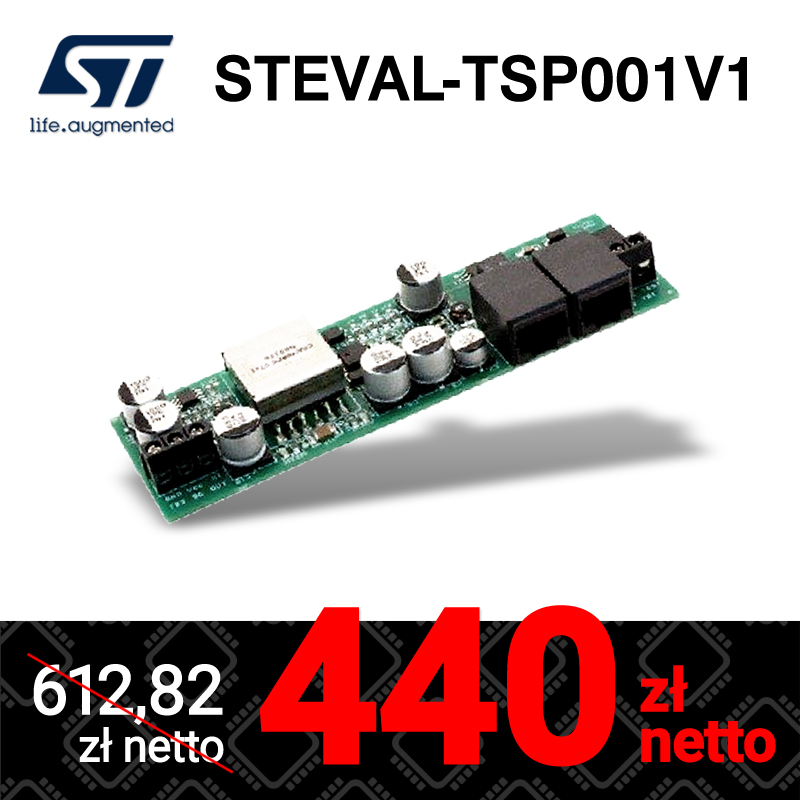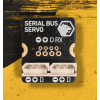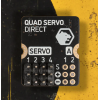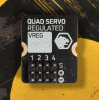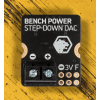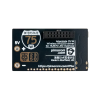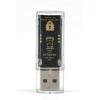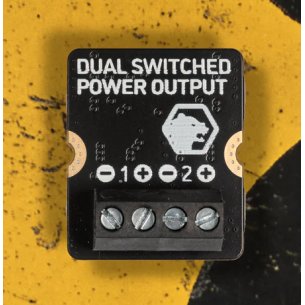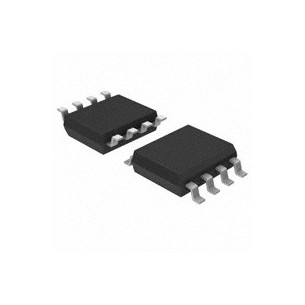Products
Categories
- Main categories
-
- 3D PRINTING
- ARDUINO
- AUTOMATION
- BOOKS
- CYBERSECURITY
- EDUCATION
- ELECTRONICS
- Cables
- Cameras and accessories
- Communication
- Conductive materials
- Connectors
- ARK connectors (Terminal Block)
- Banana connectors
- Coaxial connectors (RF)
- Connectors
- Crocodile clip
- D-Sub drawer connectors
- DC power connectors
- FFC/FPC ZIF connectors
- Goldpin connectors
- IDC connectors
- JACK connectors
- JST connectors
- Jumpers
- Memory cards slots
- Other connectors
- Pogo pin
- Quick couplers
- RJ45 connectors
- Slip ring connector
- Supports
- USB connectors
- USB PD Adapters for Laptops
- WF connectors
- Cooling
- Displays
- Electronic modules
- A/D and D/A converters
- Audio
- Barcode readers
- CAN converters
- Converters USB - UART / RS232
- Cryptographic module
- Data logger
- DDS/PLL generators
- Digital potentiometers
- Encoders
- Expanders of the I/O
- Fingerprint readers
- Galvanic isolation modules
- HMI modules
- Image and video
- JTAG accessories
- Keyboards, buttons
- LED drivers
- Memory card readers
- Memory modules
- Modules with power outputs
- Motor controllers
- Power modules
- RS485 converters
- RTC modules
- Servo Controllers
- TSOP infrared receivers
- USB Converters - I2C / 1-Wire / SPI
- Voltage converters
- Gadgets
- GPS
- Intelligent clothes
- LED - diodes, displays, stripes
- Luminous wires and accessories
- Machine vission (MV)
- Memory cards and other data storages
- Passive elements
- PC accessories
- Printers
- Programatory czasowe
- Prototype boards
- Relays
- Semiconductors
- A/C converters (ADC)
- Analog systems
- Audio systems
- Bridge rectifiers
- Button
- D/A Converters (DAC)
- DDS synthesizers
- Digital circuits
- Diodes
- Drivers of motors
- DSP microprocessors
- Energy counters
- Energy harvesting
- ESD security
- IGBT drivers and bridges
- Interface systems
- LED drivers
- Logic converters
- Memory
- Microcontrollers
- Optotriacs and optocouplers
- Other
- PLL generators
- Power systems
- Programmable systems
- Resetting systems
- RF systems
- RTC systems
- Sensors
- SoC systems
- Timery
- Touch sensors
- Transistors
- Sensors
- Accelerometers
- Air humidity sensors
- Air quality sensors
- Current sensors
- Distance sensors
- Flow sensors
- Gas sensors
- Gyroscopes
- Hall sensors
- Humidity sensors
- Infrared sensors
- Laser scanner
- Light and color sensors
- Liquid level sensors
- Magnetic sensors (compasses)
- Medical sensors
- Motion sensors
- PH sensors
- Position sensors
- Pressure sensors
- Pressure sensors
- Reflection sensors
- Sensors 6DOF/9DOF/10DOF
- Sensors of liquid quality
- Temperature sensors
- Vibration sensors
- Sound transducers
- Switches and buttons
- Cables
- FPGA DEVELOPMENT KITS
- MEASURING DEVICES
- Anemometers
- Cable testers
- Distance measurement
- Electronic loads
- Generators
- Insulation resistance meters
- LCR meters
- Logic analyzers
- Measures and calipers
- Multimeters
- Network analyzers
- Oscilloscopes
- Other meters
- Panel meters
- Radiation detectors
- Sound meters
- Temperature measurement
- Testery USB
- Voltage indicator
- Wattmeters
- Weights
- MECHANICS
- MINICOMPUTERS (SBC)
- POWER
- RASPBERRY PI
- Accessories for Raspberry Pi
- Audio video cables for Raspberry Pi
- Case Raspberry Pi
- Cooling for Raspberry Pi
- Displays for Raspberry Pi
- Extension modules for Raspberry Pi
- Memory cards for Raspberry Pi
- Power for Raspberry Pi
- Raspberry Pi 3 model A+
- Raspberry Pi 3 model B
- Raspberry Pi 3 model B+
- Raspberry Pi 4 model B
- Raspberry Pi 400
- Raspberry Pi 5
- Raspberry Pi 500
- Raspberry Pi cameras
- Raspberry Pi Compute Module
- Raspberry Pi model A/ B+/2
- Raspberry Pi Pico
- Raspberry Pi prototyping
- Raspberry Pi Zero
- Raspberry Pi Zero 2 W
- RETIRED PRODUCTS
- SALE
- STARTER KITS, PROGRAMMERS, MODULES
- Atmel SAM
- Atmel Xplain
- AVR
- Coral
- DFRobot FireBeetle
- ESP32
- ESP8266
- Feather / Thing Plus
- Freedom (Kinetis)
- M5Stack
- Micro:bit
- Nordic nRF
- Other development kits
- Particle Photon
- Peripheral modules
- PIC
- Raspberry Pi RP2040
- RFID
- RISC-V
- Seeed Studio LinkIt
- Segger programmers
- SOFTWARE
- Sparkfun MicroMod
- STM32
- STM32 Discovery
- STM32 MP1
- STM32 Nucleo boards
- STM8
- Teensy
- Universal programmers
- WRTNode
- XIAO/Qt PY
- Atmel SAM
- WORKSHOP
- Adhesives for hot glue guns
- Chemistry
- Agents for securing electronics
- Cleaning and preserving agents
- Compressed air
- Conductive paints and varnishes
- Distilled water
- Etcher
- Freezing
- Gas for lighters and burners
- Isopropyl alcohol (IPA)
- Label removers
- Lubricants, oils
- Pastes and adhesives thermally conductive
- PCB cleaning products
- Thermopads - thermally conductive tapes
- CNC milling machines
- Crimping tools
- Dispensing needles
- Gluers
- Glues
- Heat-shrink tubing
- Insulation strippers
- Knives
- Laboratory power supplies
- Microscopes
- Mini drills and grindrers
- Organizers
- Personal protection (OHS)
- Power tools
- Sandpapers
- Scissors
- Soldering
- Antistatic mats and accessories (ESD)
- BGA balls
- BGA rework stations
- Brushes and ESD brushes
- Desoldering Wick
- Handles, magnifiers
- Heat guns
- Heaters and soldering irons
- Laminates
- Portable soldering irons
- Silicone Soldering Mats
- SMD Accessories
- Soldering accessories
- Soldering chemistry
- Soldering irons
- Soldering pastes
- Soldering pots
- Soldering stations
- Soldering tips
- Sponges and cleaners
- Stand for soldering irons
- Tin
- Tin extractors
- Ultrasonic cleaners
- Tapes (aluminum, kapton, copper, insulating)
- Tools
- Tweezers
- Vices
- Workshop lighting
- 3D PRINTING
New products
New products New products
Category: FRAM memory
Advanced FRAM Memory: The Technology of the Future
FRAM memory, or Ferroelectric Random Access Memory, is one of the most innovative solutions in the field of data storage. It combines the advantages of RAM and EEPROM, offering exceptional write and read speeds, low power consumption, and data longevity. Thanks to these features, FRAM is gaining popularity in many advanced applications, from the medical industry to the automotive sector. These memories are used in systems where reliability and quick data access are crucial. They are also used in IoT systems and modern industrial automation solutions. Market forecasts indicate the dynamic development of this technology, making it one of the most promising directions in electronics. As the demand for more advanced and reliable solutions grows, FRAM memory will play an increasingly important role.
There is 1 product.
FRAM memory with a capacity of 4kbit by Cypress Semiconductor, communicates via the I2C bus, the power supply voltage is in the range 2.7 - 3.6V. The system has an SOIC8 housing
Unique Features of FRAM Memory
FRAM memory stands out with unique properties that make it exceptional among other types of memory. One of the most important features is the extremely fast write and read time, comparable to RAM, while maintaining non-volatility, which is characteristic of EEPROM. FRAM also offers very high resistance to write/read cycles, translating into long lifespan even in demanding industrial applications. Additionally, these memories have low power consumption, which is crucial in battery-powered devices.
Wide Applications of FRAM Memory
FRAM memory is used in many fields where reliability and performance are key. In medicine, it is used in monitoring devices where quick access to patient data can be life-saving. In the automotive industry, it is used in safety and engine management systems where reliable data storage is essential. The aerospace and space industries also utilize FRAM memory, where extreme conditions require the highest durability and reliability. Thanks to these advantages, FRAM is becoming an increasingly popular choice in modern electronic systems.
Technological Advantages of FRAM Memory
FRAM technology offers advantages that distinguish it from other memory solutions. Due to its unique architecture, FRAM does not require power to store data, eliminating the risk of data loss in the event of a power failure. Additionally, with low power consumption, FRAM is ideal for portable devices and IoT systems. The longevity of data and radiation resistance make FRAM indispensable in space and military applications. All these features make FRAM the technology of the future, which will play an increasingly significant role in developing technology sectors.
Forecasts for the Development of FRAM Technology
The FRAM memory market is growing rapidly, and forecasts indicate further dynamic development of this technology. With technological progress and the increasing demand for reliable and energy-efficient memory solutions, FRAM is gaining more recognition. It is predicted that in the coming years, this technology will be integrated into a broader range of applications, from advanced medical systems, through smart cities, to modern solutions in the automotive and aerospace industries. Investments in the development and research of FRAM will be a key element in the future of non-volatile memory, opening new possibilities in the field of electronics.
Innovative Memory Solutions
Thanks to its unique properties, FRAM memory is one of the most innovative types of non-volatile memory available on the market. Its fast access time, low power consumption, high resistance to write cycles, and data longevity make it an ideal solution for many advanced applications. With the dynamic development of technology, FRAM memory will play an increasingly significant role in various industrial sectors, contributing to the creation of more reliable and efficient electronic systems.

